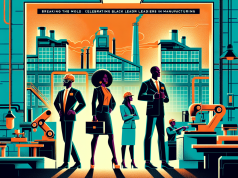In the heart of bustling cities like New York, the workplace is more than just a physical space. It’s a complex ecosystem where different cultures, identities, and experiences converge. But within this melting pot of diversity lies a less visible, yet critical issue – the unique stressors faced by employees from various backgrounds. Today, we delve deep into the intersectionality of stress and diversity, unraveling how these elements intertwine in the urban work environment.
The concept of intersectionality, first coined by Kimberlé Crenshaw, is a lens through which we can understand how aspects of a person’s social and political identities combine to create different modes of discrimination and privilege. It’s a crucial framework for analyzing the multifaceted experiences of stress in the workplace.
For instance, a Latina woman may face a distinct type of pressure, compounded by both gender and ethnicity. Consider the microaggressions, the subtle biases, or the glass ceiling phenomena that women of color often encounter. These are not just personal challenges but are systemic in nature, deeply entrenched in the fabric of our professional landscapes. In urban settings, the competition is fierce, and the pace is relentless, which can magnify these stressors further.
When stress is not addressed, it can lead to burnout, decreased productivity, and, importantly, a feeling of isolation. The impact on mental well-being is profound. This is where inclusive policies come into play. But inclusivity isn’t just about equal opportunity; it’s about creating an environment that recognizes, respects, and actively addresses the varied stressors unique to diverse groups.
So, how can organizations step up? It starts with listening – fostering open dialogues where employees feel safe to share their experiences. Training programs on cultural competency, like the ones we conduct, are vital. They can educate leaders and colleagues on the importance of empathy and understanding different perspectives. Moreover, companies can implement holistic wellness programs that take into account the intersectional stress factors affecting their employees.
To create change, we must go beyond surface-level solutions. It means re-evaluating hiring practices, developing mentorship programs that support underrepresented groups, and ensuring that leadership reflects the diversity of the workforce it governs. It’s about establishing clear avenues for reporting and addressing discrimination and providing resources that cater to the unique needs of a diverse staff.
The road to an inclusive and equitable workplace is ongoing, and it calls for a commitment from all levels of an organization. As you reflect on your own workplace experiences, consider the role that intersectionality plays in stress and mental well-being. What initiatives could your company adopt to better support all employees? How can you, as an individual, contribute to a culture of inclusivity?
We invite you to engage in this vital conversation. Share your thoughts, your stories, and your ideas for building a workplace where diversity is not just accepted but celebrated, and where stress is not an insurmountable burden but a challenge we can collectively alleviate. Together, we can shape a future of work that ensures the well-being of every employee, regardless of their background, as we stride towards a truly inclusive and equitable professional world.




























